Stages of Pregnancy
Stages of Pregnancy
Within 24 hours after fertilization, the egg that will become your baby rapidly divides into many cells. By the eighth week of pregnancy, the embryo develops into a fetus. Pregnancy is counted as 40 weeks, starting from the first day of the mother’s last menstrual period. These weeks are divided into three trimesters. Your estimated date of birth is only to give you a guide. Babies come when they are ready and you need to be patient. Below we explore the stafes of pregnancy:
Pregnancy is divided into three trimesters:
- First trimester – conception to 12 weeks
- Second trimester – 12 to 24 weeks
- Third trimester – 24 to 40 weeks.
The moment of conception is when the woman’s ovum (egg) is fertilized by the man’s sperm to complete the genetic make-up of a human fetus. At this moment (conception), the sex and genetic make-up of the fetus begin. About three days later, the fertilized egg cell divides rapidly and then passes through the Fallopian tube into the uterus, where it attaches to the uterine wall. The attachment site provides nourishment to the rapidly developing fetus and becomes the placenta.
The start of Stages of Pregnancy?
Medical professionals measure pregnancy week 1 from the first day of a woman’s last menstrual period. This is called the gestational age, or menstrual age. It’s about two weeks ahead of when conception actually occurs. Although a woman is not actually pregnant at this point, counting week 1 from the last menstrual period can help determine a woman’s estimated pregnancy due date. Your healthcare provider will ask you about this date and will use it to figure out how far along you are in your pregnancy.
How early can I know I’m pregnant?
From the moment of conception, the hormone human chorionic gonadotrophin (hCG) will be present in your blood. This hormone is created by the cells that form the placenta (food source for the growing fetus). It’s also the hormone detected in a pregnancy test. While you may get a positive POAS test at 3 weeks, it’s a good idea to wait a week or two and test again to confirm. A blood test also can detect hCG and is more sensitive than a urine test. Pregnancy can detect pregnancy as early as 6 days after ovulation, you could be able to confirm your pregnancy at/around 3 weeks.
Stages of Fetal Development
During the first trimester, your body undergoes many changes. Hormonal changes affect almost every organ system in your body. These changes can trigger symptoms even in the very first weeks of pregnancy. Your period stopping is a clear sign that you are pregnant.
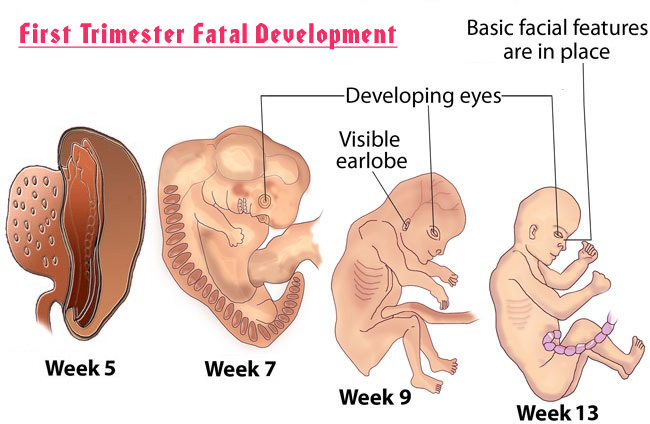
The developing baby is tinier than a grain of rice. The rapidly dividing cells are in the process of forming the various body systems, including the digestive system. The evolving neural tube will eventually become the central nervous system (brain and spinal cord).
First trimester (week 1–week 12)
- 1 and 2: Getting ready
- 3: Fertilization
- 4: Implantation
- 5: Hormone levels increase
- 6: The neural tube closes
- 7: Baby’s head develops
- 8: Baby’s nose forms
- 9: Baby’s toes appear
- 10: Baby’s elbows bend
- 11: Baby’s genitals develop
- 12: Baby’s fingernails form
Second trimester (week 13–week 27)
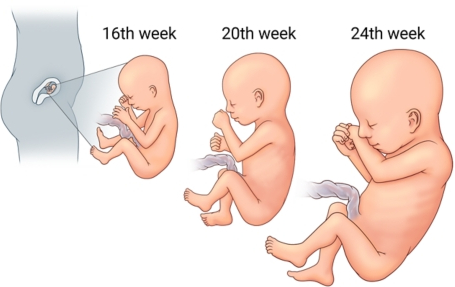
Most women find this second trimester easier than the first. But it is just as important to stay informed during all stages of pregnancy.
You might notice that symptoms like nausea and fatigue are going away. But other new, more noticeable changes to your body are now happening. Your abdomen will expand as the baby continues to grow. And before this trimester is over, you will feel your baby beginning to move. Fetal development takes on new meaning in the second trimester. Highlights might include finding out your baby’s sex and feeling your baby move.
- 13: Urine forms
- 14: Baby’s sex becomes apparent
- 15: Baby’s scalp pattern develops
- 16: Baby’s eyes move
- 17: Baby’s toenails develop
- 18: Baby begins to hear
- 19: Baby develops a protective coating
- 20: The halfway point
- 21: Baby can suck his or her thumb
- 22: Baby’s hair becomes visible
- 23: Fingerprints and footprints form
- 24: Baby’s skin is wrinkled
- 25: Baby responds to your voice
- 26: Baby’s lungs develop
- 27: At 27 weeks, or 25 weeks after conception, your baby’s nervous system is continuing to mature. Your baby is also gaining fat, which will help his or her skin look smoother.
Third trimester (week 28–week 40)
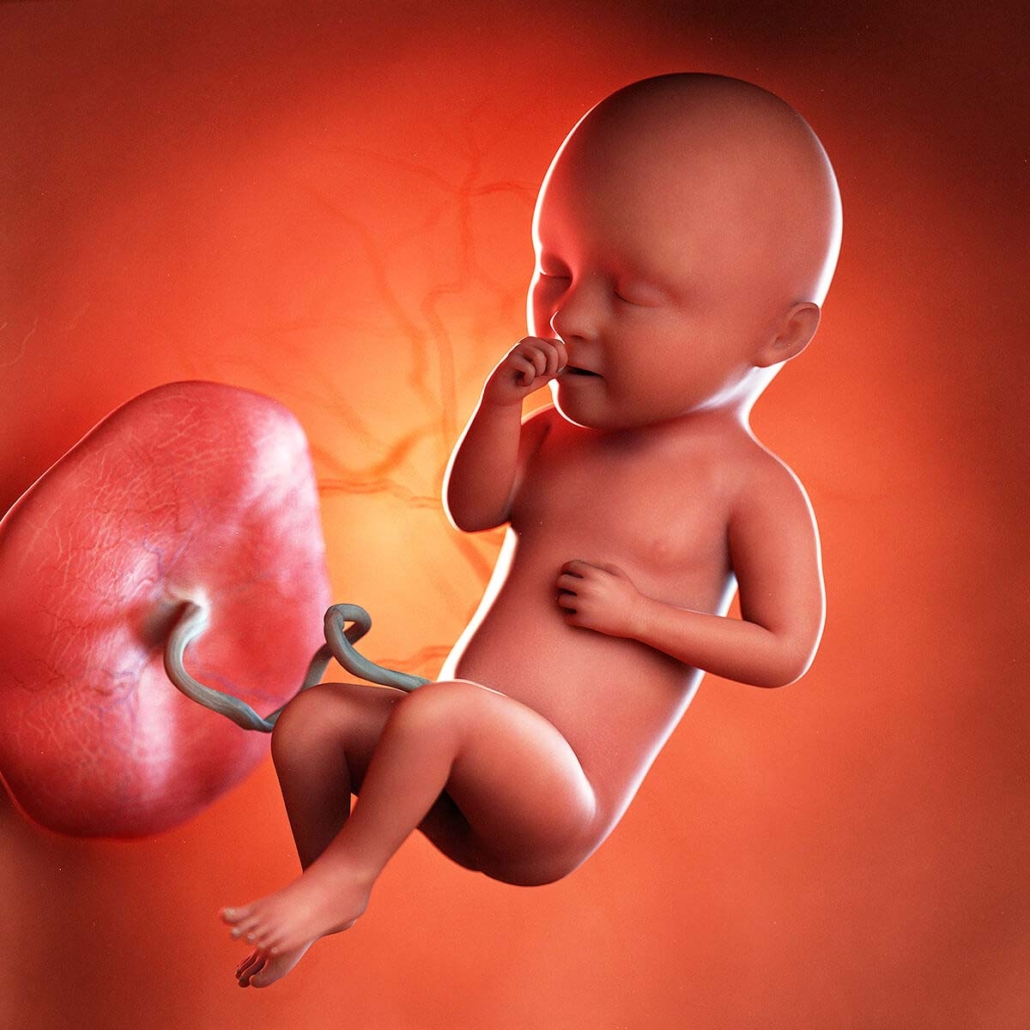
Some of the same discomforts you had in your second trimester will continue. Plus, many women find breathing difficult and notice they have to go to the bathroom even more often. This is because the baby is getting bigger and it is putting more pressure on your organs. Your baby will open his or her eyes, gain more weight, and prepare for delivery.
- 28: Baby’s eyes partially open
- 29: Baby kicks and stretches
- 30: Baby’s hair grows
- 31: Baby’s rapid weight gain begins
- 32: Baby practices breathing
- 33: Baby detects light
- 34: Baby’s fingernails grow
- 35: Baby’s skin is smooth
- 36: Baby takes up most of the amniotic sac
- 37: Baby might turn head down
- 38: Baby’s toenails grow
- 39: Baby’s chest is prominent
- 40: Your due date arrives
As you near your due date, your cervix becomes thinner and softer (called effacing). This is a normal, natural process that helps the birth canal (vagina) to open during the birthing process. Your doctor will check your progress with a vaginal exam as you near your due date. Get excited as the final countdown has begun.
Don’t be alarmed if your due date comes and goes with no signs of labor starting. Your due date is simply a calculated estimate of when your pregnancy will be 40 weeks. It does not estimate when your baby will arrive. It’s normal to give birth before or after your due date.
Disclaimer
The information on stages of pregnancy, including but not limited to, text, graphics, images and other material contained on this website are for informational purposes only. The purpose of this website is to promote broad consumer understanding and knowledge of various health topics. It is not intended to be a substitute for professional medical advice, diagnosis, or treatment. Always seek the advice of your physician or another qualified healthcare provider with any questions you may have regarding a medical condition or treatment before undertaking a new health care regimen, and never disregard professional medical advice or delay in seeking it because of something you have read on this website.
Preferences:
https://my.clevelandclinic.org/health/articles/7247-fetal-development-stages-of-growth

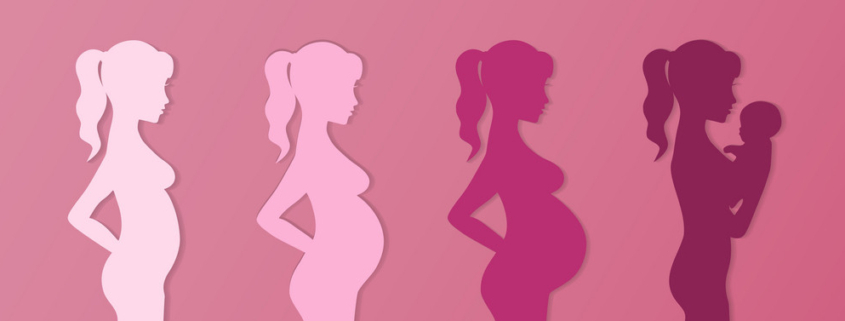
 ToronTek
ToronTek 


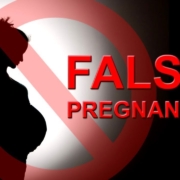





Leave a Reply
Want to join the discussion?Feel free to contribute!